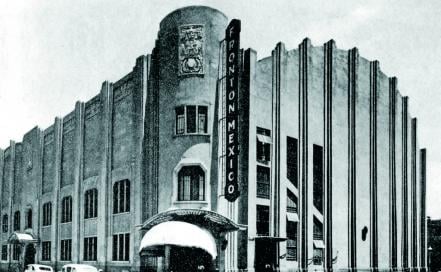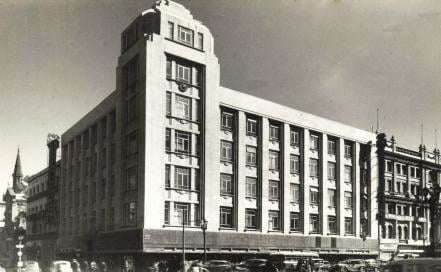Más Información

PAN cede sus comités como albergues para migrantes; Romero pide a Sheinbaum evitar guerra arancelaria con EU

“México no se raja”: Mexicanos se solidarizan con paisanos ante deportación masiva de Trump; respaldan a Sheinbaum

UNAM propone aumento del 4% en salario y 2% en prestaciones a académicos; falta aprobación del personal

Consulados ofrecen a mexicanos en EU talleres para conocer sus derechos; promueven planes ante posibles detenciones

“A resolver”; Senado tiene plan B para elección judicial en caso de que Comité del PJ desacate resolución: Noroña

No hay enfrentamientos en el Poder Judicial: Mónica Soto; defiende denuncia contra juez que frenó actividades del Comité del PJ
The Art Deco movement has been covered time and time again throughout El Universal's century-long history. Many of our journalists have not only covered the movement, but have also admired Art Deco's presence and influence on Mexico, namely through the buildings from the era, many of which continue to define Mexico City's urban skyline today.
Art Deco can be seen in the city's architecture, art, and graphic and industrial design from the 1920's. It had such a huge impact on society that its influence is also seen in Mexican cinema, sculpture, painting and fashion from the time.
Originally referred to as the Style Moderne, the movement eventually became known worldwide as Art Deco. According to specialists, it all began at the 1925 International Exhibit of Modern Decorative and Industrial Arts in Paris, which ran for seven months, and fascinated and dazzled over 16 million people.
The exhibit laid out the characteristics that would go on to define the era: geometric forms, unvaried repetition of elements, relative simplicity, and a sleek elegance that symbolized wealth and sophistication and an admiration for the age of the machine. The movement was heavily influenced by the discoveries made at the time of ancient Egypt, the Bauhaus art school, cubism, futurism and constructivism.
Art Deco's influence on Mexico
Art Deco began its influence the country in its capital Mexico City in the 1920's. After Mexico's violent revolution, Mexico's middle class took on an important role in the country, which led to an economic boom in the capital. The Hipódromo Condesa and San Rafael neighborhood went on to become symbols of Mexico's Art Deco movement, where many iconic residential buildings were designed and constructed by Juan Segura and Francisco J. Serrano.
Unfortunately, many of these buildings have been abandoned, forgotten or even demolished over the years, including the Frontón México building, that's still standing in the Tabacalera neighborhood. But not all is lost. One of the most iconic buildings from the era stands just a few blocks away, the National Lottery building, which was completely restored in 2011.
 (Frontón México.Photo: Archives/El Universal)
(Frontón México.Photo: Archives/El Universal)
Another example of recent restoration efforts is the building that houses the city's Popular Art Museum (MAP) in Mexico City's historic downtown, which is considered to be the second most important building from the Art Deco era in the city. Just a few blocks away is the SEARS building, the Liverpool department store, the Palace of Fine Arts, all examples of Art Deco's influence on Mexican architecture.

(Photo of the Popular Art Museum taken in the 1970's. Photo: Museo de Arte Popular's Facebook page)
Right next door to El Universal is the Art Deco building that houses the offices of the Gráfico newspaper.

(El Gráfico's main office building. Photo: Archives/El Universal)
The Art Deco building of the Aseguradora Latinoamericana (formerly known as Torre Latino) replaced a French-style building that was popular during President Porfirio Diaz's rein, which lasted on and off from 1876 – 1911.

(The Seguros Latinoamericana building. Photo: Archives/El Universal)
At the end of 2011, rescue and restoration work finished for the National Lottery building. 10 million pesos were invested on the restoration project.
 (National Lottery building, which was completely restored in 2011. Photo: Archives/El Universal)
(National Lottery building, which was completely restored in 2011. Photo: Archives/El Universal)




